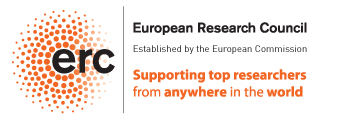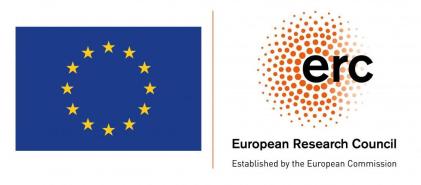 Exploiting new radio telescopes to understand the role of AGN in galaxy evolution
Exploiting new radio telescopes to understand the role of AGN in galaxy evolution
Between 2013 and 2018 this ERC Advanced grant used LOFAR to find ad characterise dying and restarted radio galaxies and, using the cold gas (WSRT and ALMA), invest the impact of the radio jets on the interstellar medium. For more information see the pages describing the projects, the results and publications, the telescopes we have used and the people part of the RadioLife group.
Abstract of the project: Galaxy evolution is largely determined by the balance between how a galaxy accretes material from its environment and how energetic process in a galaxy expel matter back into its surroundings. Accretion leads to the formation of new stars and the growth of the central massive black hole (BH). In return, the energy released by star formation and nuclear activity (AGN) can drive strong outflows of gas, profoundly affecting the gaseous medium in and around a galaxy. This mechanism of energy feedback is now a key ingredient in models of structure formation. However, its implementation is still largely ad hoc and far from realistic. Thus, the fundamental question of how galaxies form and evolve cannot be solved without better observational constraints on how this complex interplay between accretion and outflows works.
Observations of radio AGN suggest that this type of active nucleus can play an important role in feedback. Their large jets and lobes can efficiently couple with the ISM/IGM and transport energy to large distances, preventing gas from cooling and, therefore, providing a self-regulating mechanism for gas accretion. This proposal requests funding to set up a science team dedicated at explore the full impact of radio AGN on galaxy evolution. The possibility of making a major breakthrough in this field has become possible thanks to two new and revolutionary radio facilities: the LOw Frequency ARray (LOFAR), now in its commissioning phase, and the focal-plane array system Apertif to be installed on the Westerbork Synthesis Radio Telescope (WSRT) in 2013. Both instruments use state-of-the-art technology and innovative approaches in all aspects of observing, calibration, processing and data exploitation. They are among the most exciting pathfinders geared towards the realization of Square Kilometer Array (SKA).
The scientific goals will be achieved by understanding the duty cycle of radio sources, i.e. how often the radio-loud phase appears in the life of a galaxy, and by quantifying their role in feedback effects by tracing massive gaseous outflows resulting from the impact of radio jets and lobes, on the ISM/IGM of the host galaxy.
The wide field-of-view, coupled with the superb sensitivity and high spatial resolution in a range of low frequencies provided by LOFAR, will give the first opportunity to explore on a sound statistical basis, the occurrence, morphology and spectral properties of low surface brightness radio emission left over from past periods of activity of the central black hole. This will be complemented by the possibility offered by Apertif to make a census, out to unprecedented distances, of the gas content and the characteristics of outflows of cold gas by tracing neutral hydrogen (HI) in radio sources out to z ~ 0.4. The combined large-scale inventory of gas properties and evolutionary stages of the radio sources will substantially deepen our knowledge of radio-loud AGN (Active Galactic Nuclei) and their effect on the host galaxy, and will provide a key reference resource for the international community.

This research project is funded by the European Research Council under the European Union’s Seventh Framework Programme / ERC grant agreement nr. 320745 (RadioLife; PI R. Morganti)

